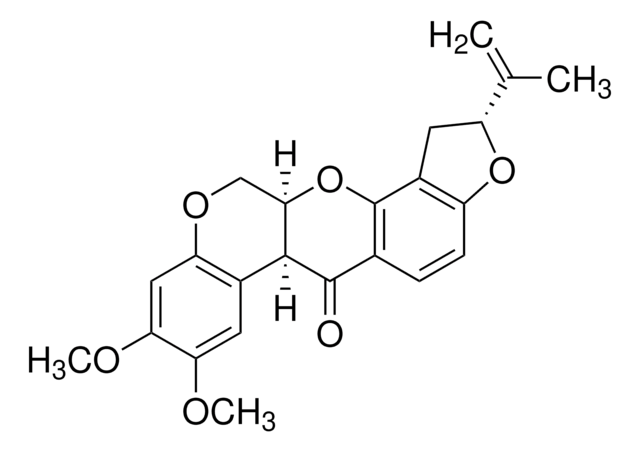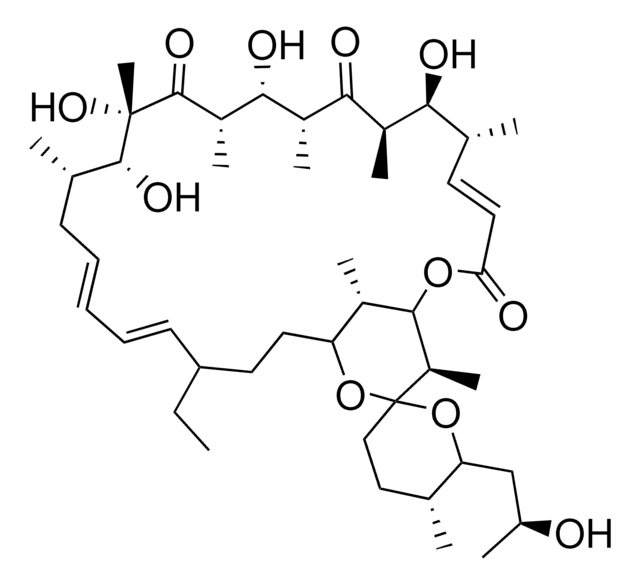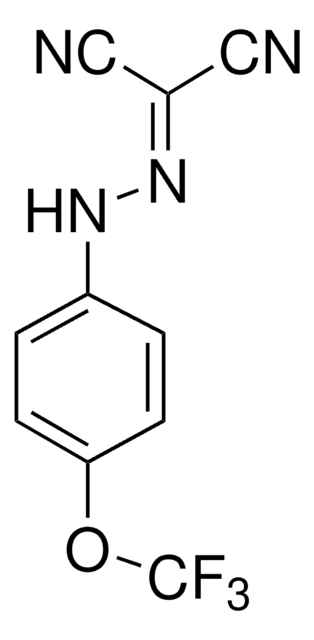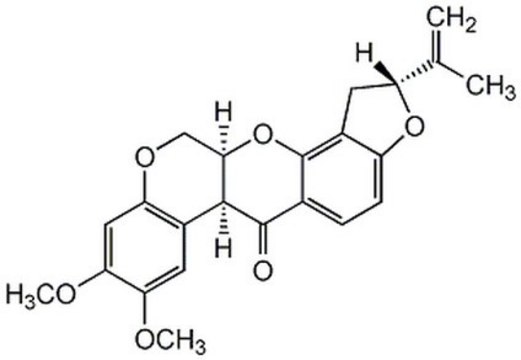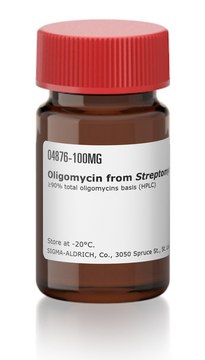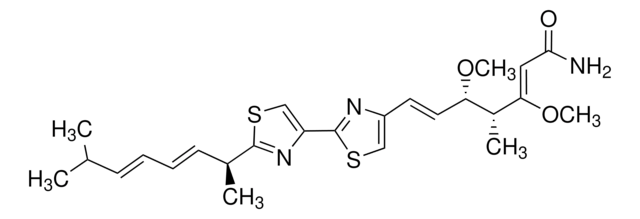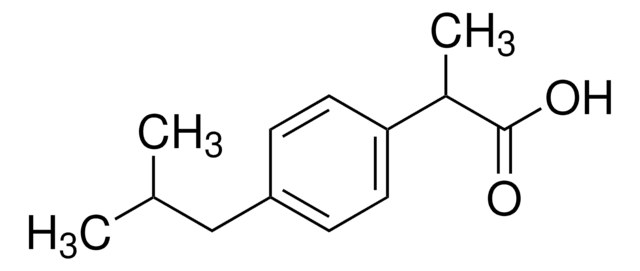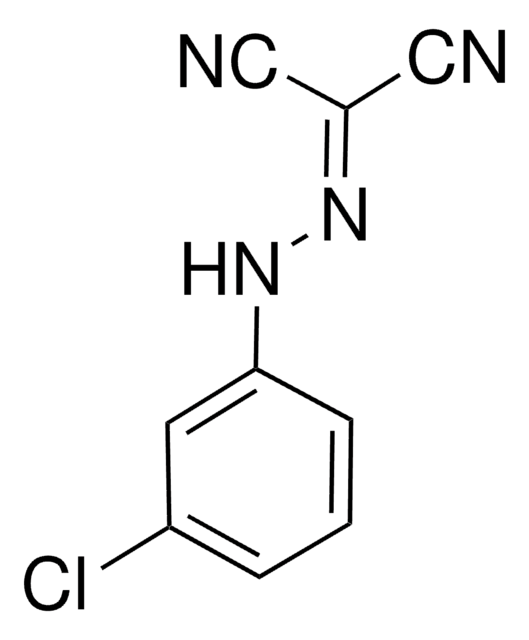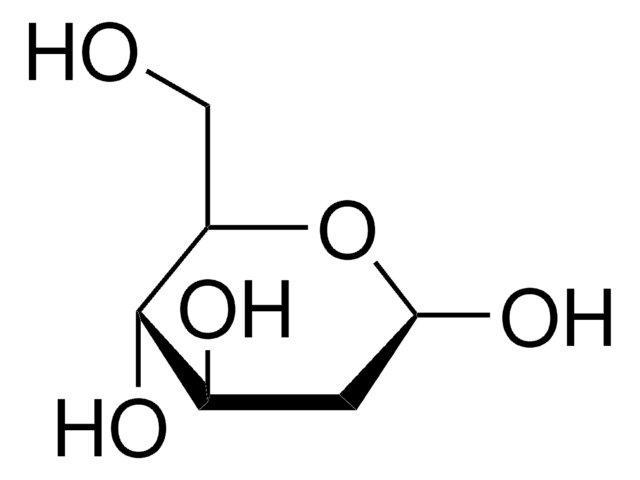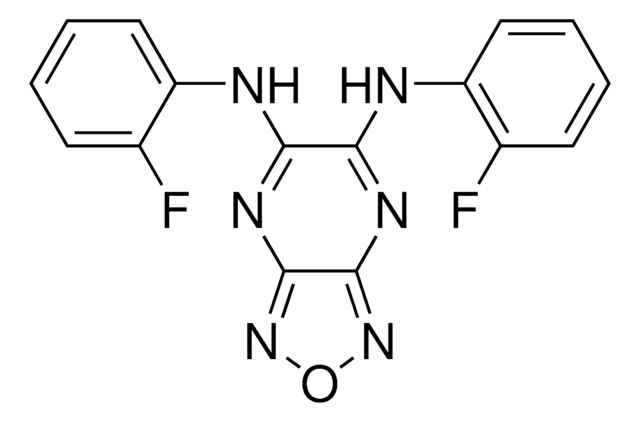A8674
Antimycin A from Streptomyces sp.
Synonym(s):
Antipiricullin
About This Item
Recommended Products
form
powder
Quality Level
antibiotic activity spectrum
fungi
Mode of action
enzyme | inhibits
storage temp.
−20°C
SMILES string
[H]C(=O)Nc1cccc(C(=O)N[C@H]2[C@@H](C)OC(=O)C(CCCCCC)[C@@H](OC(=O)CC(C)C)[C@H](C)OC2=O)c1O
InChI
1S/C28H40N2O9/c1-6-7-8-9-11-20-25(39-22(32)14-16(2)3)18(5)38-28(36)23(17(4)37-27(20)35)30-26(34)19-12-10-13-21(24(19)33)29-15-31/h10,12-13,15-18,20,23,25,33H,6-9,11,14H2,1-5H3,(H,29,31)(H,30,34)/t17-,18+,20?,23+,25+/m1/s1
InChI key
UIFFUZWRFRDZJC-RBVQMQRASA-N
Looking for similar products? Visit Product Comparison Guide
General description
Application
- as a respiratory chain inhibitor in neuronal cultures
- in organello ATP production assay in Trypanosoma brucei cells
- in respiration assay for papillary thyroid carcinoma (PTC) cell lines
Biochem/physiol Actions
Quality
Signal Word
Danger
Hazard Statements
Precautionary Statements
Hazard Classifications
Acute Tox. 2 Oral - Aquatic Acute 1
Storage Class Code
6.1A - Combustible acute toxic Cat. 1 and 2 / very toxic hazardous materials
WGK
WGK 3
Flash Point(F)
Not applicable
Flash Point(C)
Not applicable
Personal Protective Equipment
Regulatory Information
Choose from one of the most recent versions:
Certificates of Analysis (COA)
Don't see the Right Version?
If you require a particular version, you can look up a specific certificate by the Lot or Batch number.
Already Own This Product?
Find documentation for the products that you have recently purchased in the Document Library.
Which document(s) contains shelf-life or expiration date information for a given product?
If available for a given product, the recommended re-test date or the expiration date can be found on the Certificate of Analysis.
How do I get lot-specific information or a Certificate of Analysis?
The lot specific COA document can be found by entering the lot number above under the "Documents" section.
What is the molecular weight of Antimycin A, Product A8674?
The product is a mixture of antimycins, each with a unique molecular weight. The approximate molecular weights (g/mole) for the components are A1: 548.6; A2: 534.6; A3: 520.6; A4:506.6. The percentages of each component are lot specific and are determined by HPLC. This information can be found on the Certificate of Analysis. We averaged the molecular weights for four lots and obtained an approximate molecular weight of 532 g/mole.
What is Antimycin A, Product A8674, soluble in?
Antimycin A is soluble in DMSO at 2 mg/mL and in 95% ethanol at 50 mg/mL. It is also freely soluble in ether, acetone, and chloroform. It is insoluble in water.
Can solutions of Antimycin A, Product A8674, be stored?
It has been reported that in a 95% alcoholic solution, Antimycin A is stable for four months at 4 °C.
What is the working concentration for Antimycin A, Product A8674?
A concentration of 2 micrograms/ml (1000 fold dilution from a DMSO stock solutions) was reportedly used on endothelial cells per Wilkinson, J.A., and Jacob, R., Agonist-induced calcium and oxidative stress responses in endothelial cells. Biochem. Soc. Trans., 31, 960-962 (2003).
What is the shipping and storage temperature for Product A8674, Antimycin A from Streptomyces?
Antimycin A is stable at ambient temperature for up to 2 weeks and is shipped at ambient temperatures to reduce shipping costs to the customer. Once received, it should be stored in the freezer at -20°C.
How do I find price and availability?
There are several ways to find pricing and availability for our products. Once you log onto our website, you will find the price and availability displayed on the product detail page. You can contact any of our Customer Sales and Service offices to receive a quote. USA customers: 1-800-325-3010 or view local office numbers.
What is the Department of Transportation shipping information for this product?
Transportation information can be found in Section 14 of the product's (M)SDS.To access the shipping information for this material, use the link on the product detail page for the product.
My question is not addressed here, how can I contact Technical Service for assistance?
Ask a Scientist here.
Articles
DISCOVER Bioactive Small Molecules for Nitric Oxide & Cell Stress Research
Our team of scientists has experience in all areas of research including Life Science, Material Science, Chemical Synthesis, Chromatography, Analytical and many others.
Contact Technical Service